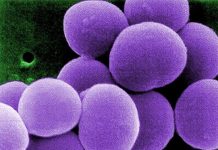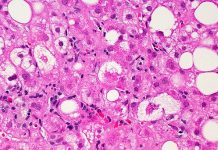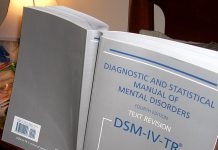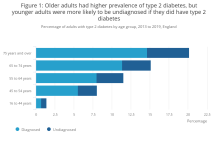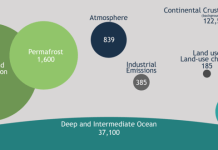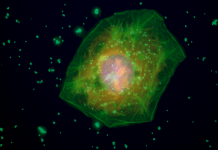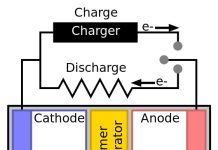In the very early universe, soon after the Big Bang, the ‘matter’ and the ‘antimatter’ both existed in equal amount. However, for the reasons unknown so far, the ‘matter‘ dominates the present universe. The T2K researchers have recently shown occurrence of a possible Charge-Parity violation in neutrino and the corresponding anti-neutrino oscillations. This is a step forward in understanding why matter dominates the universe.
The Big Bang (which occurred about 13.8 billion years ago) and other related theories of physics suggest that the early universe was radiation ‘dominant’ and the ‘matter’ and the ‘antimatter’ existed in equal amount.
But the universe that we know today is ‘matter’ dominant. Why? This is one of the most intriguing mysteries of universe. (1).
The universe that we know today started with equal amounts of ‘matter’ and ‘antimatter’, both were created in pairs as the law of nature would require and then got annihilated repeatedly producing radiation known as the ‘cosmic background radiation’. Within about 100 micro seconds of the Big Bang the matter (particles) somehow started outnumbering antiparticle by say one in every billion and within seconds all the antimatter was destroyed, leaving behind only matter.
What is the process or mechanism that would create this kind of difference or asymmetry between the matter and antimatter?
In 1967, the Russian theoretical physicist Andrei Sakharov postulated three conditions necessary for an imbalance (or production of matter and antimatter at different rates) to occur in the universe. First Sakharov condition is the baryon number (a quantum number that remains conserved in an interaction) violation. It means that protons decayed extremely slowly into lighter subatomic particles like a neutral pion and a positron. Similarly, an antiproton decayed into a pion and an electron. Second condition is the violation of charge conjugation symmetry, C, and charge conjugation-parity symmetry, CP also called Charge-Parity violation. Third condition is that the process that generates baryon-asymmetry must not be in thermal equilibrium due to rapid expansion decreasing the occurrence of pair-annihilation.
It is the Sakharov’s second criterion of CP violation, which is an example of a kind of asymmetry between particles and their antiparticles that describes the way they decay. By comparing the way particles and antiparticles behave, i.e., the way they move, interact, and decay, scientists can find evidence of that asymmetry. The CP violation provides an evidence that some unknown physical processes is responsible for the differential production of matter and antimatter.
The electromagnetic and ‘strong interactions’ are known to be symmetric under C and P, and consequently they are also symmetric under the product CP (3). ‘‘However, this is not necessarily the case for the ‘weak interaction’, which violates both C and P symmetries’’ says Prof. B.A. Robson. He further says that “the violation of CP in weak interactions implies that such physical processes could lead to indirect violation of baryon number so that matter creation would be preferred over antimatter creation’’. Non-quark particles do not show any CP violations whereas the CP violation in quarks are too small and are insignificant to have a difference in matter and antimatter creation. So, the CP violation in leptons (neutrinos) become important and if it is proved then it would answer why the universe is matter dominant.
Although CP symmetry violation is yet to be proved conclusively (1) but the findings reported by the T2K team recently shows that scientists are really close to it. It has been demonstrated for the first time that the transition from particle to electron and neutrino is favoured over the transition from antiparticle to electron and antineutrino, through highly sophisticated experiments at T2K (Tokai to Kamioka) (2). T2K refers to a pair of laboratories, the Japanese Proton Accelerator Research Complex (J-Parc) in Tokai and the Super-Kamiokande underground neutrino observatory in the Kamioka, Japan, separated by about 300 km. The proton accelerator at Tokai generated the particles and antiparticles from high energy collisions and detectors at Kamioka observed the neutrinos and their antimatter counterparts, antineutrinos by making very precise measurements.
After the analysis of several years of data at T2K, scientists were able to measure the parameter called delta-CP, which governs the CP symmetry breaking in neutrino oscillation and found the mismatch or a preference for enhancement of the neutrino rate which can eventually lead to the confirmation of CP violation in the way neutrinos and antineutrinos oscillated. The results found by the T2K team are significant at statistical significance of 3-sigma or 99.7% confidence level. It’s a milestone achievement as confirmation of CP violation involving neutrinos is linked with the dominance of matter in the universe. Further experiments with larger database will test whether this leptonic CP symmetry violation is larger than CP violation in quarks. If it is so then we will finally have the answer to the question Why the universe is matter dominant.
Though the T2K experiment does not clearly establish that CP symmetry violation has occurred but it is a milestone in the sense that it conclusively shows a strong preference for enhanced electron neutron rate and takes us closer to prove the occurrence of CP symmetry violation and eventually to the answer ‘why the universe is matter dominant’.
***
References:
1. Tokyo University, 2020. ‘’T2K Results Restrict Possible Values of Neutrino CP Phase -…..’’ Press Release Published 16 April 2020. Available online at http://www.icrr.u-tokyo.ac.jp/en/news/8799/ Accessed on 17 April 2020.
2. The T2K Collaboration, 2020. Constraint on the matter–antimatter symmetry-violating phase in neutrino oscillations. Nature volume 580, pages339–344(2020). Published: 15 April 2020. DOI: https://doi.org/10.1038/s41586-020-2177-0
3. Robson, B.A., 2018. The Matter-Antimatter Asymmetry Problem. Journal of High Energy Physics, Gravitation and Cosmology, 4, 166-178. https://doi.org/10.4236/jhepgc.2018.41015
***












